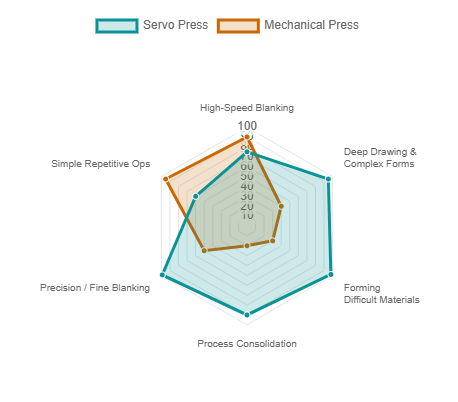What is the Rated Tonnage Height in Mechanical Presses?
- Emrah Demirezen

- Feb 4, 2024
- 3 min read
Updated: Apr 27, 2024
In reality the Rated Tonnage and the Rated Tonnage Height in Mechanical Presses are the two most critical specifications. When investing in a mechanical press, some common important points are generally tonnage, table and ram dimensions or press speed. This is the most important press design parameter, especially along with tonnage, which is often overlooked but perhaps needs to be considered for a press. A rated tonnage height value that is incompatible with the die to be operated on can cause serious damage to your press, shorten its life, and even cause your press to crack at the weakest point in its design. The need for service that can not be repaired or that will take a very long time may cause serious production losses.
Let's start by explaining the simple structure of a mechanical press. Mechanical presses are energy-limited machines, they work by transferring the energy stored in a flywheel to the ram via a clutch, crank-connecting rod, eccentric gear or bone joint mechanisms. In other words, as long as there is enough energy in our flywheel, the ram can apply the load that the die requires to push throughout the stroke. This means: If you connect a die that requires 200 tons to your 100-ton press and the flywheel has enough energy to do this job, your press can apply 200 tons of force. So what's the drawback? If the crankshaft, bearings, connecting rod or body of your press is designed to withstand a pressure of 100 tons, the weakest of these components may break or your clutch may slip because it cannot transmit enough torque.

Let's assume that a 5000 kN mechanical press tries to press a constant load throughout its stroke. In the graph below, the resulting torsional moment in the crankshaft increases to 780,000 kN.mm. However, we were able to provide 5000 kN pressing force 6 mm above bottom dead center with a crank moment of 210,000 kN.mm

As a result, in order to limit the crank torsional moment in press design, the crank torsional moment that will occur at a position corresponding to 15-30 degrees of the crank angle is accepted as the design criterion. Of course, this may vary depending on the required operational requirements. In the example here, the distance of approximately 6 mm from the bottom dead center of the ram corresponds to the position of our crank angle at 15 degrees, and we will accept this value as the nominal tonnage height of the press. The crank torsion moment at this point is approximately 230,000 kN.mm. This value will be our design moment.

As you can see in the graph above, when we calculate in the direction of constant crank moment, the ram of our press loses its force capacity in positions above 6 mm and the 5000 kN capacity decreases to 1500 kN capacity. In positions below 6 mm, the force that it can apply to the die with the same moment due to the nature of the crank-connecting rod mechanism. diverges to infinity. This is another indication of how dangerous it is to connect a wrong die to our mechanical press.
That's why let's take a look at the edits in the chart below. If the press will operate below the rated tonnage height, the mold to be connected must be a mold that requires a force equal to the rated tonnage at most. If it is above the nominal tonnage height, pressing should be done below the pressure force graphic values shown with the blue line in order not to exceed our design moment value.

Emrah Demirezen
Metal Forming Expert & Press Designer
emrahdmrzn@gmail.com



Comments